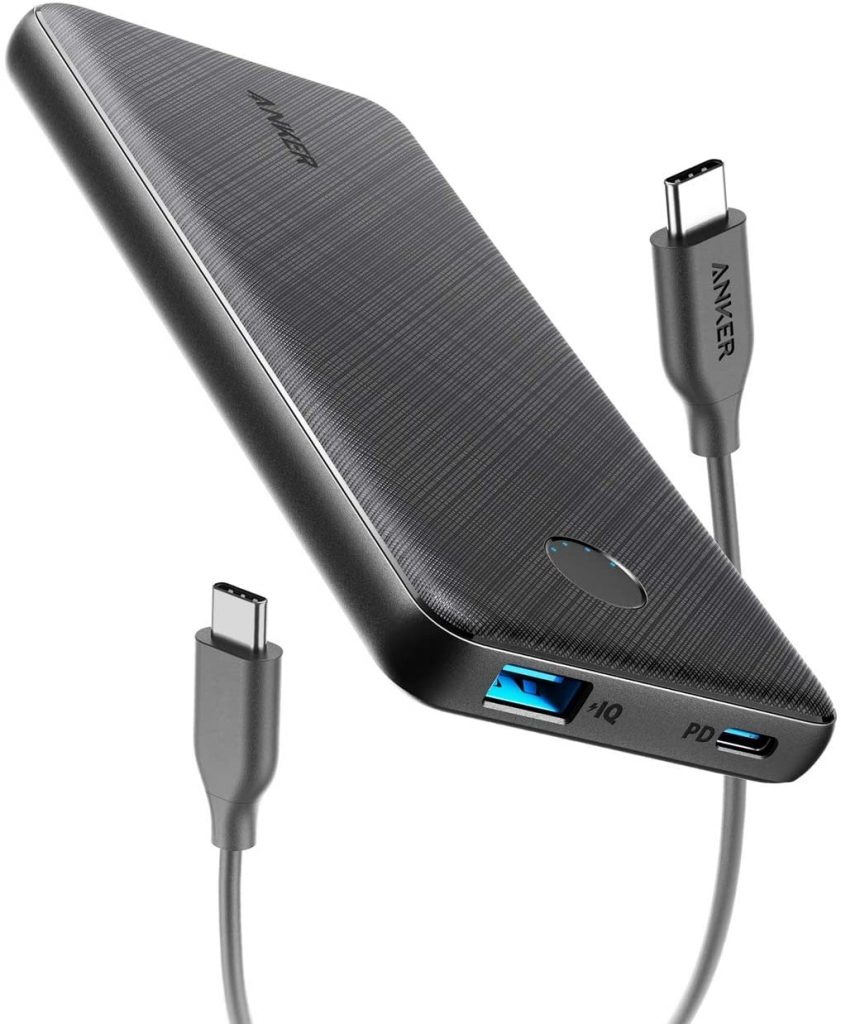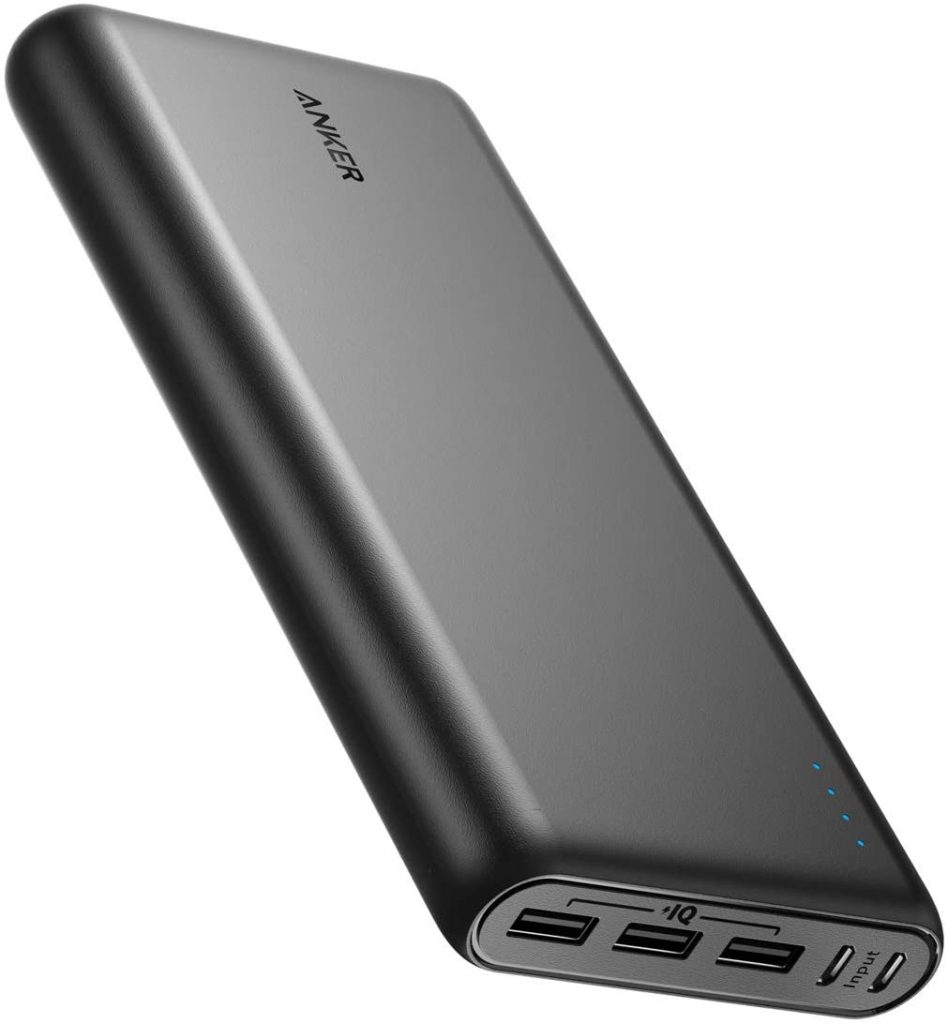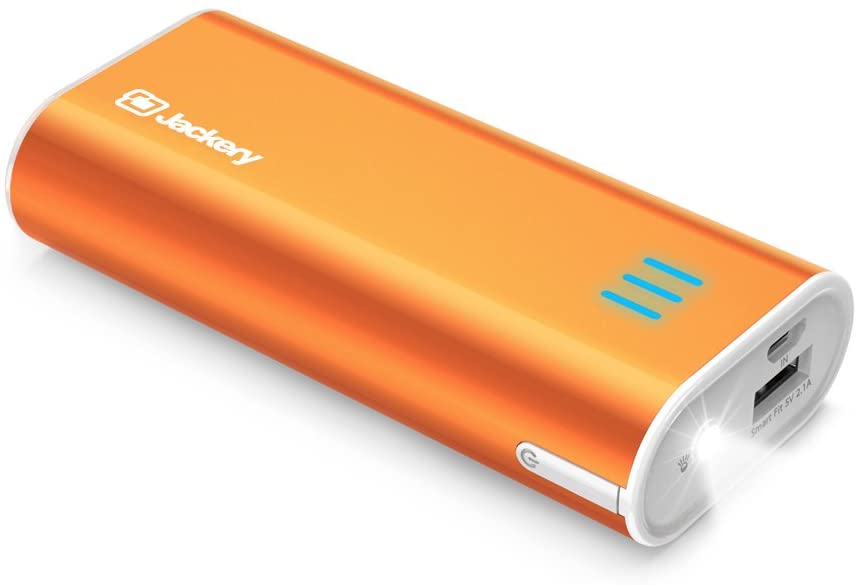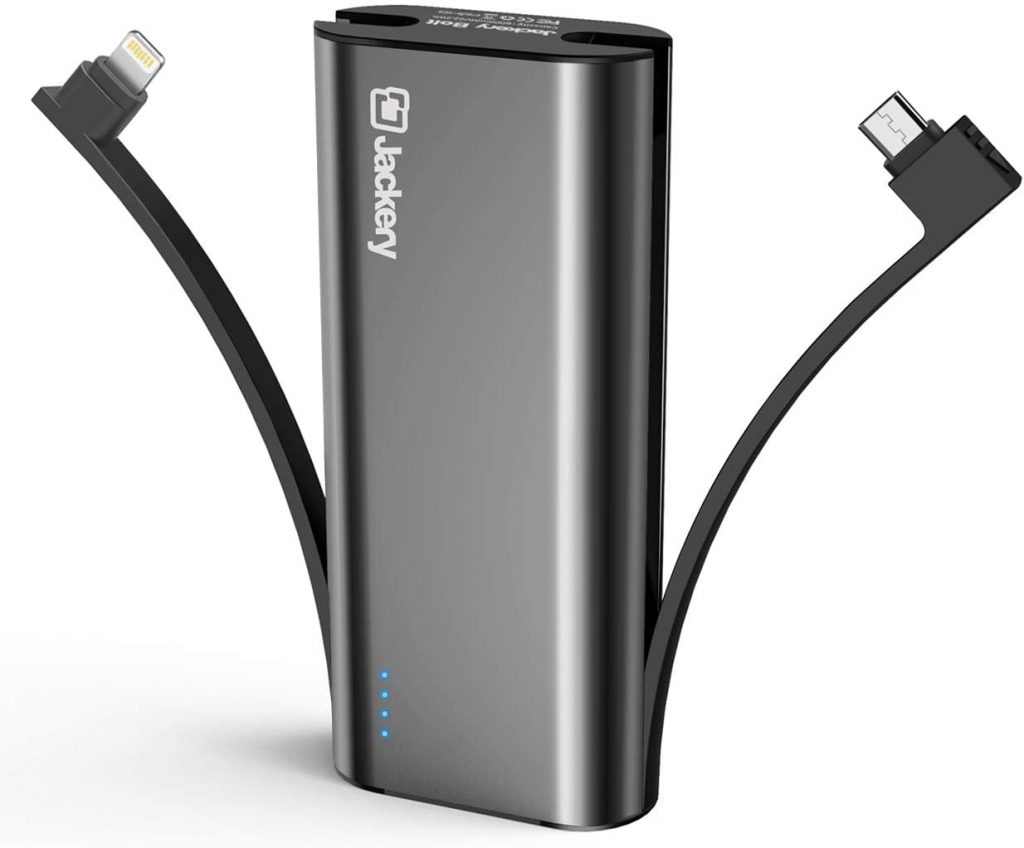Jackery vs Anker. Two of the best portable power bank brands on the market. These devices are hot commodities for all of our gadgets and gizmos. But which one is right for you and your needs? Join us as we take a closer look at each brand’s leading battery chargers.
Power Bank: Which Is Best?
In an age where electronic devices are a major part of our lives, the need for portable power is at an all-time high. Depending on the type of device you’re using, like a laptop for example, you may require a power bank that is capable of providing a lot more juice.
As we explore Jackery vs Anker, we’re going to be looking at their best power banks. This will help you determine which one is best suited for your needs. By having portable charging capabilities, all you need to do is make sure that you have your charger. The portable power banks take care of the rest.
How to Charge a Portable Charger
Portable chargers are just like any other electronic device with a battery. As such, they too need to be charged up from time to time. You are essentially carrying an extra battery around with you wherever you go. This allows you to top off your device when it begins to run low.
On average, portable charger banks take between 5 and 10 hours to fully recharge. While they take a lot longer than most smartphones, you are getting a good deal of portable power to have by your side while you’re on the go. This is handy to have when you’re somewhere without readily available power receptacles.
Which Power Banks Are the Best?
Throughout our research, it’s clear that Anker and Jackery both deliver some mighty fine power banks. But as to which specific one is the best? That largely depends on your needs. If you just need to charge up your cell phone, Jackery and Anker offer several excellent portable chargers that should serve you well.
If you’re wanting to invest in a power bank that can charge a laptop, you’ll need to look at something like the Anker PowerCore+. This powerful portable charger can charge up a laptop at full speed, giving you plenty of juice while you’re on the go.
Anker: How to Charge
The Anker PowerCore+ power bank recharges surprisingly fast for such a powerful portable charger. In as few as 3 and a half hours, the Anker PowerCore+ can be ready to charge up your cell phone, tablet, or laptop. Once you get it charged, simply use your devices’ USB charging cable by plugging it into the Anker PowerCore+ USB port.
With both USB and USB-C available, you can easily charge up a wide variety of electronic devices. The same goes for their smaller power bank, the PowerCore 10000. Although this portable charger takes a bit longer to recharge, it is incredibly compact, and it’s ideal for smartphones or tablets.
The Anker PowerCore 10000 power bank operates very much like the Anker PowerCore+ power bank, just on a much smaller scale. You have both a USB and a USB-C charging port at your disposal. This allows you to recharge devices with smaller power management capabilities.
To charge a device that uses the older micro USB cable, simply plug the micro USB cable into the available USB port. Think of the Anker PowerCore like you would a charging block that comes with most cell phones and tablets. Instead of plugging your device into the wall, you’re going to be plugging it into the portable charger via the micro USB cable.
Reviews
1. Anker PowerCore Slim 10000 – Best Overall Option
The Anker PowerCore Slim 10000 power bank is a compact portable charger that is a handy companion to have with you. Its small size makes it ideal for tossing in your backpack or purse. Or, just keep it in your center console while you travel. You get both a single USB and USB-C port for charging your smaller devices.
The Anker PowerCore Slim 10000 is designed to quickly and efficiently recharge your smartphone or tablet. It’s about the same size as a typical smartphone, and about as slim, as well. This makes it a breeze to pack around with you wherever you go.
If you are using a smartphone or tablet that still uses micro USB, you’re in luck. The Anker PowerCore Slim 10000 easily accepts smaller devices that require a USB port. And if you’re using a newer device that makes use of USB-C, simple plug your device’s USB-C cable into the provided charging port.
To recharge the Anker PowerCore Slim 10000 power bank, you may use either standard USB or USB-C. If using USB, you’ll need to give it around 10 hours to fully recharge. But if you use USB-C, the Anker PowerCore 10000 will be ready to go in as few as 4 hours.
The standard USB port supports Quick Charge devices, giving you power quickly when you need it. Being Quick Charge-ready means you won’t have to wait long to juice up your devices. This is handy for those who are on the go a lot and rely on their smartphone for work.
PROS
- Trickle Charging – This handy mode ensures that your devices don’t overcharge. This is a big plus for smaller devices, like cell phones. Power is distributed on a smaller scale, giving you just the right amount without fear of damaging your devices.
- USB/USB-C– Thanks to having both ports available, you can charge up a wide variety of electronic devices. Older devices primarily make use of traditional USB, while newer, updated devices use USB-C. Having this kind of versatility is ideal, as not all newer devices use USB-C.
- Protection – Anker’s MultiProtect feature ensures that your devices are protected from power surges, short circuits, and the like. You never have to worry about your electronic devices getting zapped thanks to this preventative function.
CONS
- No Charging Cords – The Anker PowerCore Slim 10000 doesn’t come with any charging cables, so you will either have to use your own, or buy some separately. Admittedly, this isn’t really a big deal. Most of us have plenty of charging cords laying around that we have accumulated over the years. If not, these cables are pretty cheap.
2. Anker PowerCore+ – Upgrade Option
Looking for more power? Then the Anker PowerCore+ power bank is right up your alley. This mighty power bank is even capable of replacing laptop chargers. Portable chargers like this can juice up a slew of electronic devices, from smartphones to the latest laptops.
It comes ready with fast charging capabilities so you can quickly and efficiently charge up your favorite electronics. It’s powerful enough to keep your smartphones juiced up for days. Even USB-C-friendly laptops from Apple and Dell get well over a day’s worth of power thanks to the Anker PowerCore+.
This is one of the heavier-duty power banks on the market. The Anker PowerCore+ works exceptionally well at keeping power-hungry devices running smoothly. And thanks to MultiProtect, you never have to worry about your expensive laptop getting fried.
The Anker PowerCore+ power bank comes equipped with advanced trickle charge technology to ensure that your electronic devices don’t overcharge. This is especially important on smaller devices, like cell phones and tablets. Power is quickly and evenly distributed in a way that never supplies too much to your battery capacity.
As powerful as laptop power banks are, this model is incredibly compact. We love how easy it is to pack away when traveling. You can easily toss it in your suitcase or backpack without taking up much room.
The price of the Anker PowerCore+ is a bit more expensive when compared to other power banks we reviewed, but you’re also getting a ton of power.
If you travel often for work, you know how important it is to have power at the ready whenever you need it. Which begs the question: can you really put a price on that kind of convenience?
PROS
- USB/USB-C – Anker gives you access to 2 USB ports, and 1 USB-C port. This kind of versatility allows you to easily recharge your devices with ease. Using a device with standard USB? No problem! Anker has you covered. And for newer devices, USB-C is available for easy charging.
- 26800mAh – With capacity like this, you can charge up a device like the iPhone X up to 6 times on a single charge. Having this kind of power ensures that you don’t have to worry about recharging the Anker PowerCore+ every night (unless you’re charging your laptop throughout the day).
- 45-Watt – With big charging power like this, you can recharge your phone and laptop without breaking a sweat. Power banks with this kind of wattage are ideal for newer, USB-C laptops. If you need a serious battery pack, the Anker PowerCore+ is the one you want.
CONS
- Pricey – Yes, the Anker PowerCore+ is expensive for a power bank. But you have to consider the convenience you’re getting. This is a heavy-duty battery pack that works remarkably well and recharges quickly. That in itself is worth the price of admission.
Now that we’ve explored Anker in our Jackery vs Anker guide, it’s time to give Jackery a look. How do they compare to Anker’s high-quality power banks? Do Jackery power banks perform just as well? Only one way to find out…
3. Jackery Portable Travel Charger Bar – Value Option
If you’re on a tight budget, you don’t need to spend a lot to get a quality power bank. The Jackery Charger Bar is one of more compact power banks available from Jackery. This handy little guy is the perfect travel companion, as it comes equipped with a built-in flashlight.
You’ve likely seen portable power banks like this one before. But when you compare Jackery’s power banks vs the competition, we’re pleased to say that Jackery comes out on top as the better portable unit. The Charger Bar is incredibly well-made, with high durability and solid construction.
Power banks like the Charger Bar provide you with plenty of battery power to get you through the day. It is capable of recharging your devices faster than standard charging cables thanks to its 6000mAh capacity.
We really like how compact the Jackery Charger Bar is when carrying it around. You can easily fit it in your pocket, making it ideal for walks or runs. If you are on the move a lot, there’s no need to invest in huge power banks. The Charger Bar is just the right size for travel.
PROS
- Compact – With such a compact body, the Charger Bar is ideal for those on the go. Keep it in your pocket or backpack while you jog. Or throw it in your purse for easy access when your device needs juice.
- 6000mAh – This kind of battery capacity ensures quick charging that lasts. You’ll have no trouble getting your devices powered up quickly with the Jackery Charger Bar.
- Affordable – You simply can’t beat the price that Jackery offers the Charger Bar for. It’s very well-priced, allowing those on a tight budget to enjoy the advantages of portable power banks.
CONS
- Flashlight Button – We love having a handy flashlight, but the button leaves a lot to be desired. It’s really easy to turn on accidentally. This can be a bit of a battery drain on your Charger Bar, so be sure to keep an eye on the flashlight.
4. Jackery Bolt 6000 – Alternative Option
Jackery power banks like the Jackery Bolt 6000 are ideal for those who need versatility. This affordable little unit comes equipped with both Apple’s Lightning charger and a standard micro USB charger.
This ensures that a large majority of smartphone owners will be able to benefit from the Jackery Bolt 6000. This power bank supports Quick Charge, so you can look forward to getting juiced up in no time flat. Power banks like this are ideal for travel, as they have charging cables already built in.
We love how compact the Jackery Bolt 6000. Jackery makes it easy to get instant battery power while you’re on go, or at home. Simply use the provided charging cables and plug your smartphone or tablet right into the device. It’s quick, easy, and highly efficient.
The Jackery Bolt 6000 allows you to charge 2 devices at the same time. This is a huge plus for couples or families that carry both Apple and Android devices. Now there’s no need to fight over your power banks!
We also appreciate the durable build-quality of the Jackery Bolt 6000. Jackery is known for making well-made power banks, and the Jackery Bolt 6000 is no different. When it comes to Jackery vs Anker, Jackery holds its own thanks to excellent craftsmanship and high-quality performance.
PROS
- 6000mAh – The Jackery Bolt 6000 comes with enough battery capacity to ensure that your devices charge up quickly. Apple iPhone users can look forward to charging up their smartphones in as few as 1 to 2 hours, depending on the model they are using.
- Built-in Cables – This is a welcome addition, as most power banks don’t come with cables. The Jackery Bolt 6000 gives you the option to choose between either Apple’s Lightning cable or traditional micro USB. With convenience like this, you’ll be able to supply power to friends and colleagues.
- Fast Charging – We love how quickly the Jackery Bolt 6000 charges up smartphones and tablets. This means less waiting and more use. If you’re on the go a lot, power banks like this one are must-have. Those vacationing will appreciate the built-in convenience.
CONS
- Short Cords – As nice as it is to have built-in charging cables with the Jackery Bolt 6000, they are awfully short. This can be a hassle when you’re driving and you need to check your phone. They are only a few inches long, so make sure you pull over if you need your phone for any reason.
Which Power Bank Is the Best?
In the battle of Jackery vs Anker, who came out on top? While we love each product that we reviewed, we feel that the Anker PowerCore Slim 10000 is the best bang for your buck. It’s such a well-rounded power bank, with its incredible charging power and stellar price.
Anyone who regularly travels and needs portable power can’t go wrong with the Anker PowerCore Slim 10000. If, however, you are an avid laptop user, the PowerCore+ is better suited to your needs.
We can’t discount the offerings from Jackery, either. Both of their entries surpassed our expectations, both in performance and affordability. If you run or ride a bike often, Jackery’s smaller power banks should serve you well.




